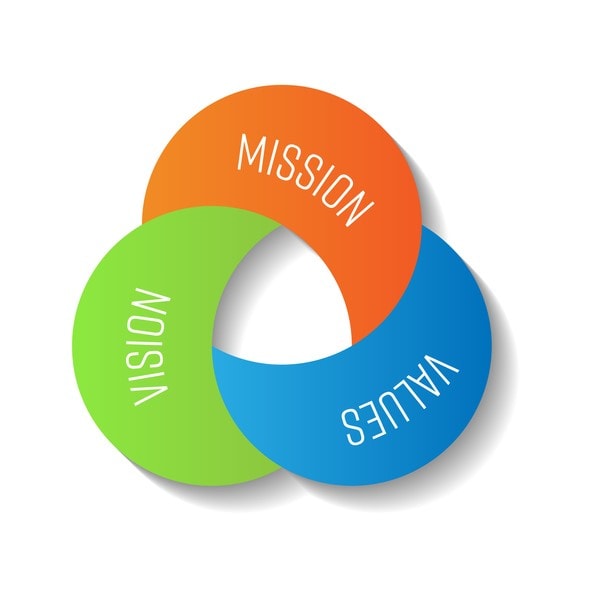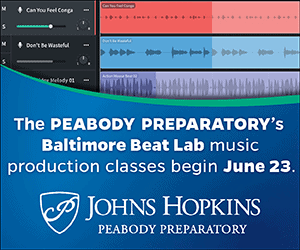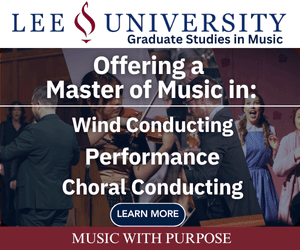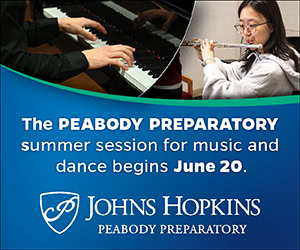/ News Posts / Vision 2020: Did We Make Key Changes?
Vision 2020
Did We Make Key Changes?
By NAfME Member Lori Schwartz Reichl
This article was originally published in the January 2020 teacher edition of In Tune Magazine.
“Never limit your vision based on your current resources.” ~ Michael Hyatt
Are you a member of your state music education association? Are you actively involved? Are you proud of the association? Do you feel confident in its abilities to serve its members and most importantly—all students? If not, are you making key changes to refresh the vision?
In 1969 the National Association for Music Education (known then as MENC) created The Goals and Objectives Project which identified “35 objectives of critical responsibility pertaining to the goals of NAfME and future needs of the profession.” Thirty years later the Housewright Symposium on the Future of Music Education titled its report “Vision 2020” and covered similar topics of discussion such as the value of music, rationales for music study, national standards, the process of engaging individuals, and technological and demographic issues in the United States. The four main goals included:
- Goal 1: Comprehensive Music Programs in All Schools
- Goal 2: Involvement of People of All Ages in Learning Music
- Goal 3: Quality Preparation of Teachers
- Goal 4: Use of the Most Effective Techniques and Resources in Music Instruction
Goal statements, by definition, identify the need for change in order to improve the status quo.
So . . . it is 2020! Did we make key changes?
A vision gives purpose, provides passion, and offers direction. It is defined as “the ability to think about or plan the future with imagination or wisdom.” (Reference my October 2018 column “Sharpen Your Vision.”) The NAfME strategic plan identifies its vision as “leading the world in music education, empowering generations to create, perform, and respond to music.” Its mission is “to advance music education by promoting the understanding and making of music by all.” The plethora of information on the NAfME website demonstrates the organization’s attempts to meet and exceed that mission.
What did NAfME do to make key changes to enhance our organization?
The national association was originally called the “Music Supervisors’ National Conference.” In 1934, it changed its name to “Music Educators National Conference” and later expanded to “MENC: The National Association for Music Education.” On September 1, 2011, the name was modified to “National Association for Music Education.” Along with the evolution of the name, the association would highlight a balance in its mission, focusing on both teaching and learning. Recent efforts to enhance diversity and inclusion are therefore in agreement with this semantic change.
What did your federated music education association do to make key changes to enhance its organization?
A simple glance at each of the 53 federated music education association’s websites will show variances from each association’s vision, mission statement, resources, and use of technology. Some websites are appealing, well-maintained, and easily maneuverable. Others contain outdated information, spelling errors, and grammatical mistakes. Some associations list the members of their executive board—ranging from a few elected offices to a large quantity of committee chairs. It appears some associations hire an executive director, and others do not. Some associations share student and educator achievements, vibrant photographs, and their advocacy efforts. However, regardless of the functionality and aesthetics of their electronic interfaces, the content of each site offers a window into each organization.
More than half of the state associations do not include a vision or mission statement on their home page—or at all. Only a few include the words “children,” “students,” “learners,” or “all” in their statements which vary greatly in length from one concise sentence to several paragraphs of intent. Some of the unique and empowering one-line statements include:
- Alabama’s members “support quality music instruction in Alabama from early childhood through college, and we work to foster a better understanding of music’s important role in development of the whole child.”
- Arizona is “promoting excellence in music education since 1939.”
- Connecticut is “striving to enhance the quality of music education for all children.”
- Illinois places importance on “high-quality music education for all Illinois learners.”
- Iowa is “improving the quality of music teaching and learning in Iowa.”
- Maine’s mission is “to promote and advance music education by providing a voice and venue for advocacy and advancement of music education in Maine.”
- Minnesota’s goal is to produce “high-quality music education for every student.”
- North Carolina’s “mission is to advance music education by promoting the understanding and making of music by all.”
- Tennessee’s vision is “to promote the advancement of high-quality music education for all.”
- Washington, DC, proudly states it is a place “where DC music education lives, learns, and thrives.”
How can each state make key changes to align with NAfME and enhance its association?
- Focus on the profession, but place students first.
The needs of all students must be at the forefront of any education association. Opportunities to involve and inspire all students, from every grade level, ability, demographic, and school should be paramount. A child should never be denied an opportunity to audition, register, rehearse, or perform at an event offered by the association. Embrace the broadest possible diversity of students’ musical interests and opportunities.
- Demonstrate sincere leadership.
Leaders must accept responsibility, uphold policies and procedures, manage finances, value conviction, promote partnerships, and advocate for the genuine needs of the association. The executive board should be a safe place to share suggestions and concerns, brainstorm initiatives, and offer appreciation with the understanding that disagreements may emerge. Confidential information or opposing opinions should not be shared via voice, email, or messaging before the association publicly shares.
- Provide effective communication.
Be certain documents, policies, and procedures are accurate, edited, updated, and understandable. Utilize county or district supervisors to disseminate information. Create methods to collectively communicate to all members by multiple means. Respond in a timely fashion.
- Make resources readily available.
Prepare and provide support for future teachers, new teachers, and all members. Promote diversity in composition, on the podium, in presentations at conferences, and in performance at festivals. Adhere to deadlines. Keep all utilized means of communication updated and positive, including emails, newsletters, websites, or social media accounts.
- Show gratitude.
Any person, school, or organization who supports the association and its members and students should be appreciated and heard. This includes retirees, administrators, educators, private instructors, parents, students, and patrons.
How can you make key changes to enhance your state association?
- Be informed.
Members should be knowledgeable regarding policies, procedures, events, dates, and deadlines. Updates and changes are inevitable, however, review association documents, read and abide by all instructions, and peruse the website. Inquire when an answer is not obvious.
- Get involved.
Volunteering can include offering time, materials, or energy. Serving in an elected position or as a committee chair or member can be the most time consuming, so be creative in other ways to serve. Consider hosting a festival, providing equipment for an event, editing or creating documents, producing resources, assisting with auditions, chaperoning an event, presenting a session, submitting an article for publication, mentoring a new member, or sharing an idea.
- Promote positivity.
Communicate in a manner that can promote positive and productive change. Attend a meeting, complete a survey, send an email, or make a phone call. Express concerns in civilized ways. Avoid resorting to social media to toxify a situation. Provide a resolution or create new initiatives.
- Advocate
Be the best music educator you can be to every student. Establish and maintain a comprehensive music program in your school and community. Demonstrate your passion for our profession—daily.
About the author:

Photo: Richard Twigg Photography
NAfME member Lori Schwartz Reichl is an author, educator, and consultant. Visit her at MakingKeyChanges.com.
Join Lori for a week-long graduate course reflecting the ideas shared each month in this column: AMUS 605: Making Key Changes: Refresh Your Music Program, 3 credits, July 20–24, 2020, through the University of the Arts at the Villanova University location in Pennsylvania.
Did this blog spur new ideas for your music program? Share them on Amplify! Interested in reprinting this article? Please review the reprint guidelines.
The National Association for Music Education (NAfME) provides a number of forums for the sharing of information and opinion, including blogs and postings on our website, articles and columns in our magazines and journals, and postings to our Amplify member portal. Unless specifically noted, the views expressed in these media do not necessarily represent the policy or views of the Association, its officers, or its employees.
Catherina Hurlburt, Marketing Communications Manager. February 11, 2020. © National Association for Music Education (NAfME.org)
Published Date
February 11, 2020
Category
- Uncategorized
Copyright
February 11, 2020. © National Association for Music Education (NAfME.org)









